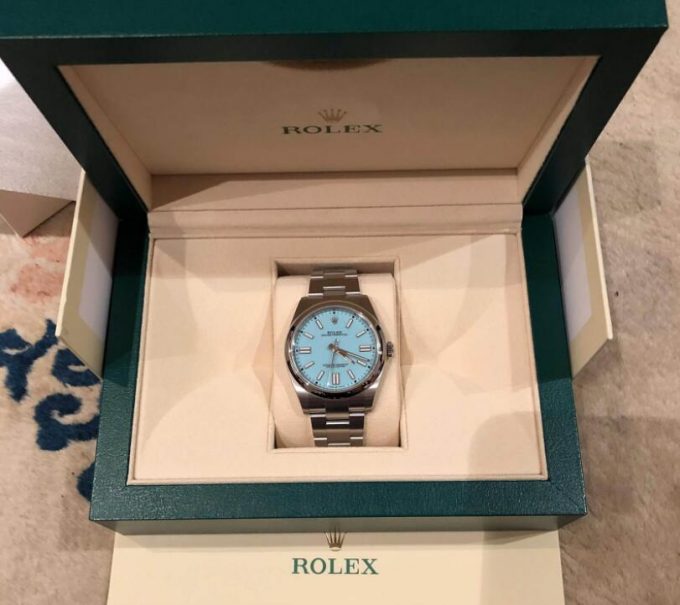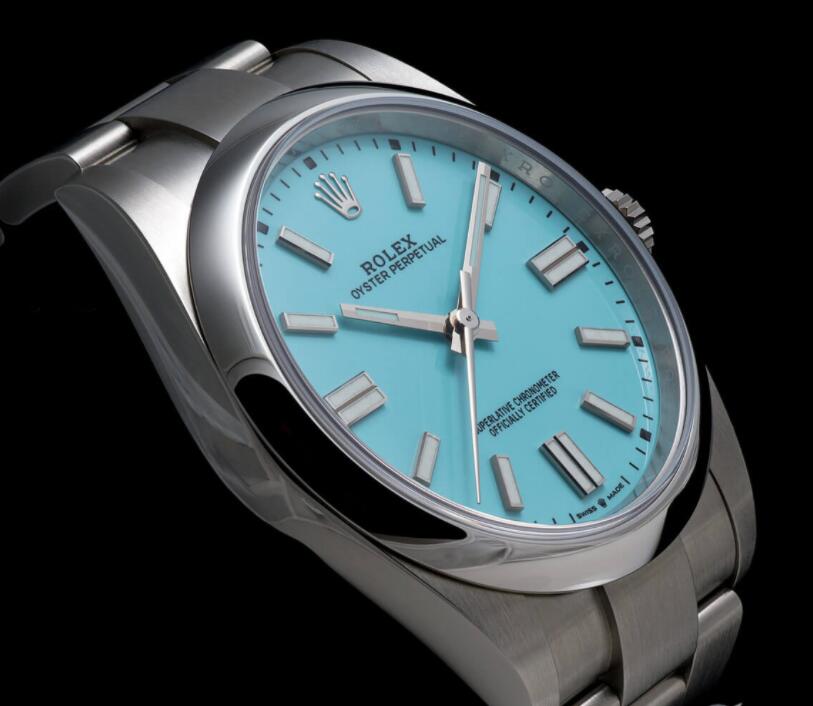
The core appeal of this watch to me is that it is similar and different at the same time. Similar enough to the vivid appearance of the vintage Stella pieces to be firmly rooted in the brand’s traditions, but at the same time different from both the vast sea of 1:1 high-quality replica Rolex watches made every year and from other pieces in my collection.
I’ve included links to a couple of in-depth articles on the vintage Stella line at the end of this article and won’t repeat its full history here, other than to note that (although different sources vary in their views) it appears that the Stella name was used in Rolex marketing materials at the time and that it most likely refers to the maker of the rich-colored lacquers used on the dials.

At least so far, Swiss made fake Rolex is not formally using the Stella name for the new Oyster Perpetual collection, so I’ll refer to them as Stella inspired or “Stella” pieces.
For me, the variations on an historical theme really work as the modernization of the new pieces, which I’d call subtle but which some Rolex purists see as radical, gives an appeal that I think a literal re-edition of the original Stella pieces would have lacked.
To start, while I fully appreciate that some folks prefer the 36 mm size, I find the 41 mm works extremely well both physically and visually on my medium-sized wrist given the way the case band curves and the bracelet drops smoothly away from the lugs.
The fairly broad, curved bezel keeps the visual size of the colored dial from being overwhelming, and the choice of the smaller Twinlock crown (as opposed to the chunkier Triplock on the GMT-Master II) adds to the harmonious look without sacrificing water resistance unduly.

I also quite like another design element that caused no shortage of wailing and gnashing of teeth among the Rolescenti: the use of (wait for it) double batons at 3, 6, and 9.
I shouldn’t make too much fun as I’m sure there are visual cues on watches from my favorite brands that I’d complain about if changed; but then again, as friend and super watch sleuth Nick Gould pointed out in a post, double markers have appeared on certain Rolex models since the 1950s, including many examples of the Oyster Perpetual Reference 6567.
The double batons at 6 o’clock are visible in the image above along with a couple of other bits that I appreciate about this watch: the “secret” signature and the “Superlative Chronometer” indication of timekeeping performance.
Like the single-bar code on the winding crown that signifies a Twinlock steel case, the laser-etched Rolex crown you can just barely see between the batons and the printed black crown is one of those “inside baseball” items that makes learning about watches fun.

And as a fan of good timekeeping, I applaud that Rolex now specifies that its fully cased-up watches are certified to a tolerance of minus to plus two seconds per day, making the use of the term “Superlative” more than marketing fluff.
In everyday use with my personal wearing pattern, my watch has consistently run at plus three, which is well within my desired margin of being able to wear a watch from Monday through Friday without having to adjust the position of the hands.
The Oyster bracelet is both solid and comfortable, and (note to A. Lange & Söhne) the rounded link profiles don’t present any jarring edges to see as the bracelet curves around the wrist.
While the provided Oysterclasp lacks the Oysterlock safety device and Oysterglide micro-adjustment mechanism (somehow I’ve now lost my appetite for oysters, but that’s a different matter), it is extendable by 5 mm by using the Easylink incorporated into the clasp, which does help with fit on warm or cold days.

On the wrist, the best Oyster Perpetual replica is as legible as it is striking; I really can’t fault the quality of the hands and indices in catching and throwing the light and presenting a crisp appearance.
The blue-hued Chromalight lume on hands and markers also passes muster, both in throwing a prodigious amount of light and complementing the blue color of the dial in dim light conditions when both are visible.
And perhaps some of the Rolex aficionados can enlighten me (pun intended): does the lume actually cast light from the underside of the hands as well or is that a reflection from the crystal?
My online searches didn’t yield any information and I quit waving my UV light around to test this question just prior to causing permanent vision damage.